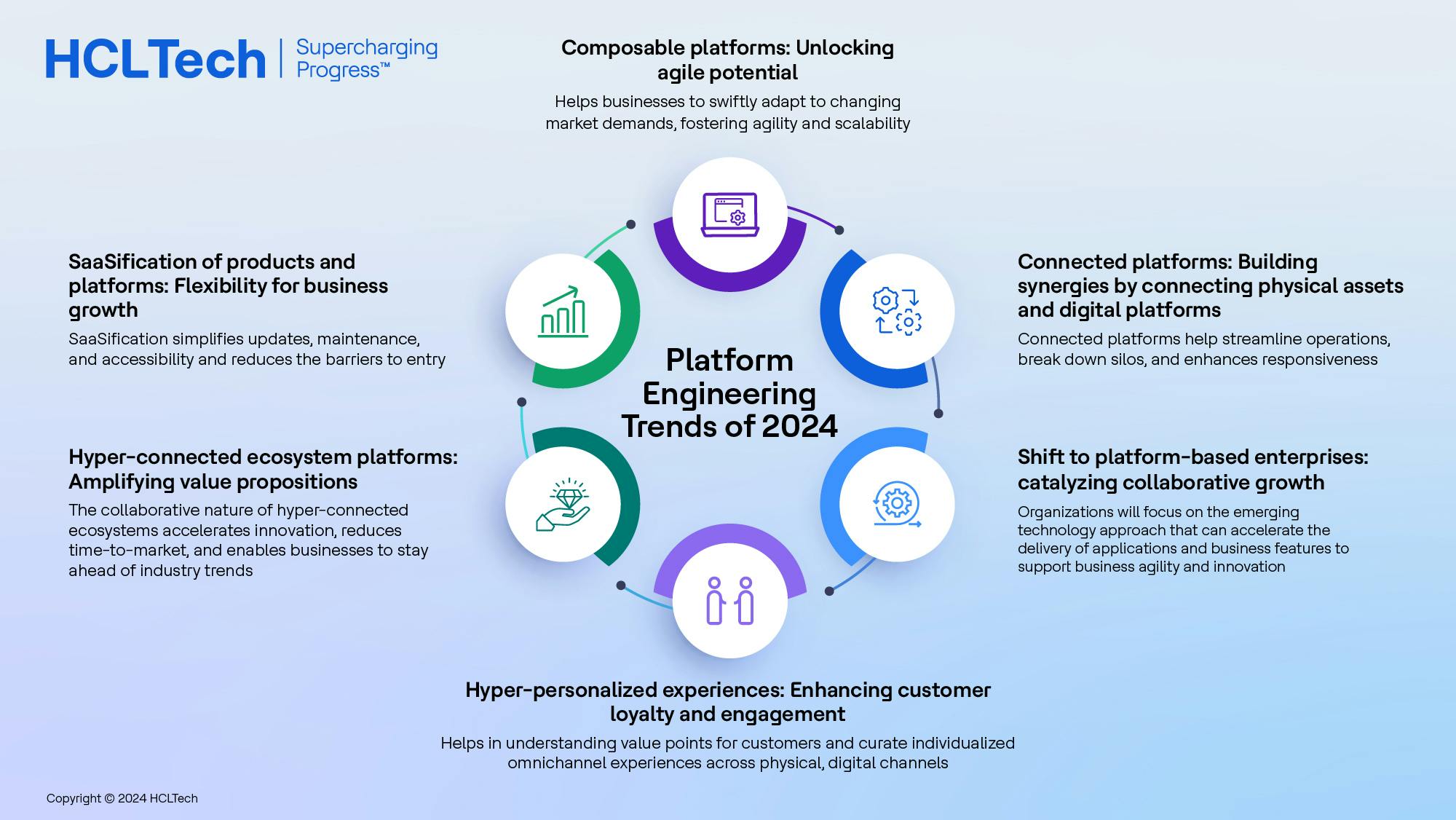As businesses continue to embrace digital transformation, several trends are emerging in platform engineering, each with its distinct impact on the way organizations operate and interact with their audiences. Let's explore some of these trends and their potential business implications.
1. Composable platforms: Unlocking agile potential
The rise of composable platforms signifies a departure from rigid, monolithic systems to flexible, modular architectures and this trend will become stronger in 2024.
This shift empowers businesses to swiftly adapt to changing market demands, fostering agility and scalability. Composite platforms lead to cost savings as organizations can easily integrate new features or services without overhauling their entire architecture. Such modernization of corporate digital platforms enables seamless interaction among various components of the business, significantly enhancing business productivity.
2. Connected platforms: Building synergies by connecting physical assets and digital platforms
Connected platforms form the foundation for businesses that operate in an interconnected network of assets. They help businesses streamline operations, break down silos and enhance responsiveness. The real-time exchange of data opens avenues for improved decision-making as businesses can leverage insights from various sources to drive innovation and optimize processes. Connected platforms are set to pave the way for a more efficient allocation of resources and a shift to more proactive, predictive and productive operations in 2024.

3. Shift to platform-based enterprises: Catalyzing collaborative growth
The shift toward platform-based enterprises has been taking deeper roots every year. In 2024, organizations will focus on this emerging technology approach that can accelerate the delivery of applications and business features to support business agility and innovation. This shift enhances collaboration and competitiveness with faster time to market, and ultimately drives growth.
4. Hyper-personalized experiences: Enhancing customer loyalty and engagement
Hyper-personalized experiences are no longer a luxury but a business necessity in 2024. Platforms leveraging big data analytics, advanced AI and machine learning algorithms to create 360-degree views of the customer have become a competitive edge for organization. They understand value points for customers and curate individualized omnichannel experiences across physical, digital channels.
By delivering tailored experiences, businesses can create a unique value proposition, attracting and retaining customers in an increasingly competitive market. Hyper-personalization enhances customer satisfaction, loyalty and engagement and we will see these platforms becoming increasingly necessary in 2024.
5. Hyper-connected ecosystem platforms: Amplifying value propositions
The evolution of ecosystems into hyper-connected entities signifies a new era in business dynamics. Platforms are no longer standalone; they are integral components of interconnected ecosystems. From a business impact perspective, this hyper-connectedness amplifies the value proposition. Organizations can tap into a broader network of resources, ideas and opportunities. The collaborative nature of hyper-connected ecosystems accelerates innovation, reduces time-to-market and enables businesses to stay ahead of competition.
6. SaaSification of products and platforms: Flexibility for business growth
The SaaSification of products and platforms is revolutionizing the way businesses deliver and consume software solutions leading to multi-tenancy, subscription-based business model. 2024 is not going to be an exception in this journey. By offering products and platforms as services, organizations provide users with greater flexibility and scalability, even for complex enterprise platforms.
From a business impact viewpoint, SaaSification simplifies updates, maintenance and accessibility and reduces the barriers to entry. This shift allows businesses to adapt quickly to changing customer needs, driving customer satisfaction and loyalty.
The trends discussed above are pivotal steps in navigating the future of business. As organizations integrate these trends into their strategies, they position themselves not only to survive but to thrive in the dynamic and competitive landscape of 2024 and beyond.
Grateful for contributions from our experts – Atul Jain, Associate Vice President, Engineering and R&D Services, HCLTech and Ankur Agarwal, Associate General Manager, Engineering and R&D Services, HCLTech.





